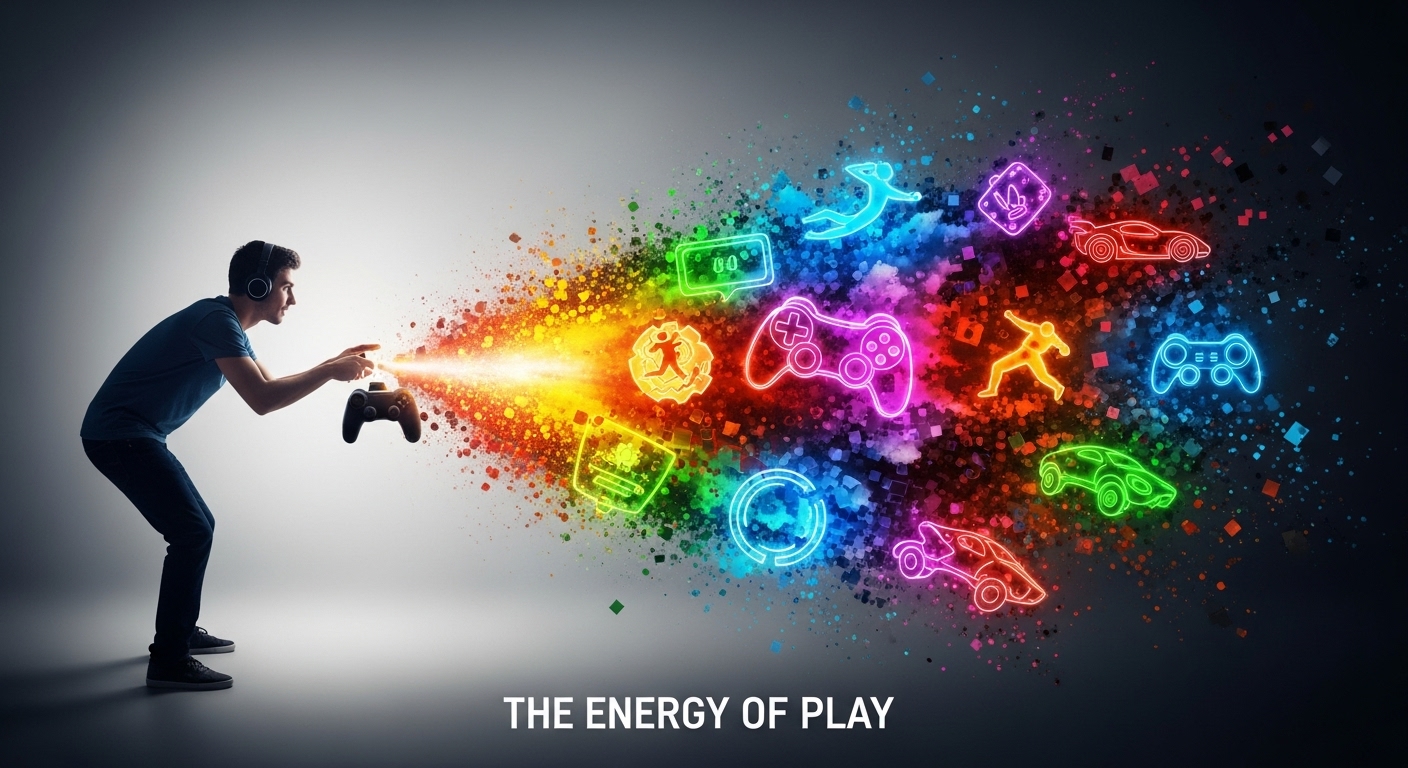Gaming has evolved from a simple pastime to a dominant force in modern entertainment. Once confined to arcades and home consoles, video games have now become a multi-billion-dollar industry, with players ranging from casual enthusiasts to professional eSports athletes. As technology continues to advance, the gaming landscape is rapidly changing. In this blog post, we’ll explore the history, current trends, and future possibilities of gaming, highlighting the innovations that are shaping the industry.
The Beginnings: Gaming’s Humble Origins
The story of gaming begins in the 1970s with the emergence of arcade machines. Games like Pong, Space Invaders, and Pac-Man were groundbreaking for their time, offering a new form of entertainment that was simple yet highly addictive. The early days of gaming were characterized by pixelated graphics, basic sound effects, and repetitive gameplay loops. Despite these limitations, arcade games captivated millions and became a social experience where players competed for high scores.
In the 1980s, gaming moved from arcades to home consoles, thanks to the introduction of systems like the Nintendo Entertainment System (NES) and Sega Genesis. This marked a major shift in how people interacted with games, as players could now enjoy their favorite titles in the comfort of their own homes. Iconic characters like Mario and Sonic were born, creating franchises that are still beloved today. The 1990s saw the rise of 3D graphics, with consoles like the Sony PlayStation and Nintendo 64 pushing the boundaries of what was possible in terms of gameplay, visuals, and storytelling.
The Impact of Online Gaming: A Global Revolution
As the internet became more widespread in the late 1990s and early 2000s, online multiplayer gaming emerged as a major trend. With titles like Halo 2, World of Warcraft, and Counter-Strike, players were suddenly able to connect with others around the world, creating a global gaming community. This shift in gaming culture transformed the way people viewed gaming. It was no longer a solo activity; it became a shared experience where friends could team up or face off against strangers in virtual worlds.
The rise of online gaming also gave birth to the eSports industry, which has exploded in recent years. Professional gamers now compete in high-stakes tournaments for massive cash prizes and sponsorships, attracting millions of viewers worldwide. Games like League of Legends, Fortnite, and Dota 2 have become global phenomena, with eSports events filling arenas and streaming platforms like Twitch and YouTube Live becoming hubs for gaming content. Online gaming has not only changed the way we play but also how we watch and experience games as a form of entertainment.
Advancements in Graphics and Immersion
One of the most significant advancements in gaming over the years has been the improvement in graphics and visual fidelity. Early games featured blocky, low-resolution graphics, but today, titles like The Witcher 3 and Red Dead Redemption 2 showcase photorealistic environments, lifelike characters, and incredibly detailed animations. The power of modern gaming consoles and high-end PCs, along with advancements in GPU technology, has allowed developers to create games that are visually stunning and immersive in ways that were once unimaginable.
In addition to graphics, the sound design in modern games has also seen significant improvements. Dynamic soundscapes, detailed voice acting, and immersive sound effects contribute to creating a world that feels alive. Audio cues, whether from ambient noises in a forest or the sound of footsteps in a dark alley, can enhance the emotional impact of a game and draw players deeper into the experience.
Virtual reality (VR) and augmented reality (AR) are pushing the boundaries of immersion even further. VR headsets like the Oculus Rift and PlayStation VR allow players to physically step into digital worlds, making gaming an entirely new sensory experience. While still in its early stages, VR is poised to revolutionize how we interact with games, offering a level of immersion that traditional screens cannot match.
The Rise of Live Service Games: Evolving with Players
In recent years, a new model of game design has taken hold: the “live service” game. Unlike traditional games that are designed to be played once and then set aside, live service games are built to evolve over time, offering continuous updates, events, and new content. Games like Fortnite, Apex Legends, and Destiny 2 are examples of titles that receive regular updates, seasonal events, and new challenges to keep players engaged long after the initial release.
This model has reshaped the way developers approach game design, with a greater focus on building a long-term relationship with players. Microtransactions, battle passes, and in-game purchases have become common ways for developers to monetize their games while providing players with ongoing content and rewards. While this model has its critics, especially concerning the rise of “pay-to-win” mechanics, it has undeniably changed the gaming landscape, making games more dynamic and responsive to player feedback.
The Future of Gaming: Cloud, AI, and Beyond
As technology continues to advance, the future of gaming promises even more exciting possibilities. Cloud gaming is one area that has the potential to change the entire industry. Platforms like Google Stadia, Xbox Cloud Gaming, and Nvidia GeForce Now allow players to stream games directly to their devices without needing powerful hardware. This could democratize gaming, making it accessible to anyone with an internet connection, regardless of whether they own a high-end gaming console or PC.
Artificial intelligence (AI) is also expected to play a larger role in the future of gaming. AI-powered NPCs (non-player characters) can react more intelligently to player actions, creating more dynamic and responsive game worlds. Additionally, AI could be used to generate procedurally generated content, allowing for endless, unique gameplay experiences. Games could adapt to the player’s skill level and play style, offering personalized challenges and storylines that keep the experience fresh.
Augmented reality (AR) is another technology that holds great promise for the future of gaming. While VR immerses players in a fully virtual environment, AR overlays digital elements onto the real world. Imagine playing a game where you see enemies and obstacles appear in your own living room, or using your phone to interact with a game world that blends seamlessly with your surroundings. AR has the potential to make gaming more social, interactive, and integrated into our daily lives.
The Social Impact of Gaming: More Than Just Fun
Beyond the technological advancements, gaming has had a profound social impact. Gaming communities have become global hubs where people from all walks of life can connect, share experiences, and form friendships. Whether it’s through competitive gaming, cooperative play, or simply watching others stream their gameplay, gaming has created a shared culture that transcends geographic and cultural boundaries.
Games are also becoming a platform for social activism, with titles like The Last of Us Part II and Life is Strange tackling themes like mental health, LGBTQ+ rights, and social justice. Gaming is increasingly being recognized as a medium for storytelling, capable of exploring complex issues and offering players a chance to reflect on the world around them.
Additionally, the rise of streaming platforms like Twitch and YouTube has created opportunities for gamers to turn their passion into a career. Professional streamers and content creators now have the ability to entertain millions of viewers while building their own brands. This shift has also led to the rise of gaming as a spectator sport, with events like the Fortnite World Cup and League of Legends Championship attracting huge audiences and sponsors.
Conclusion: Gaming’s Bright Future
The gaming industry has come a long way from its humble beginnings, and the future looks incredibly promising. With advancements in graphics, AI, VR, and cloud gaming, the boundaries of what’s possible in gaming are constantly being pushed. What was once a simple hobby has transformed into a global cultural phenomenon that connects people, tells powerful stories, and offers unique experiences.
As technology continues to evolve, gaming will likely become an even more integral part of our lives. Whether it’s playing the latest AAA title, joining an online community, or exploring new virtual worlds, gaming will continue to captivate and inspire. The digital age has given rise to a new era of entertainment, and the possibilities for what’s to come are endless.



